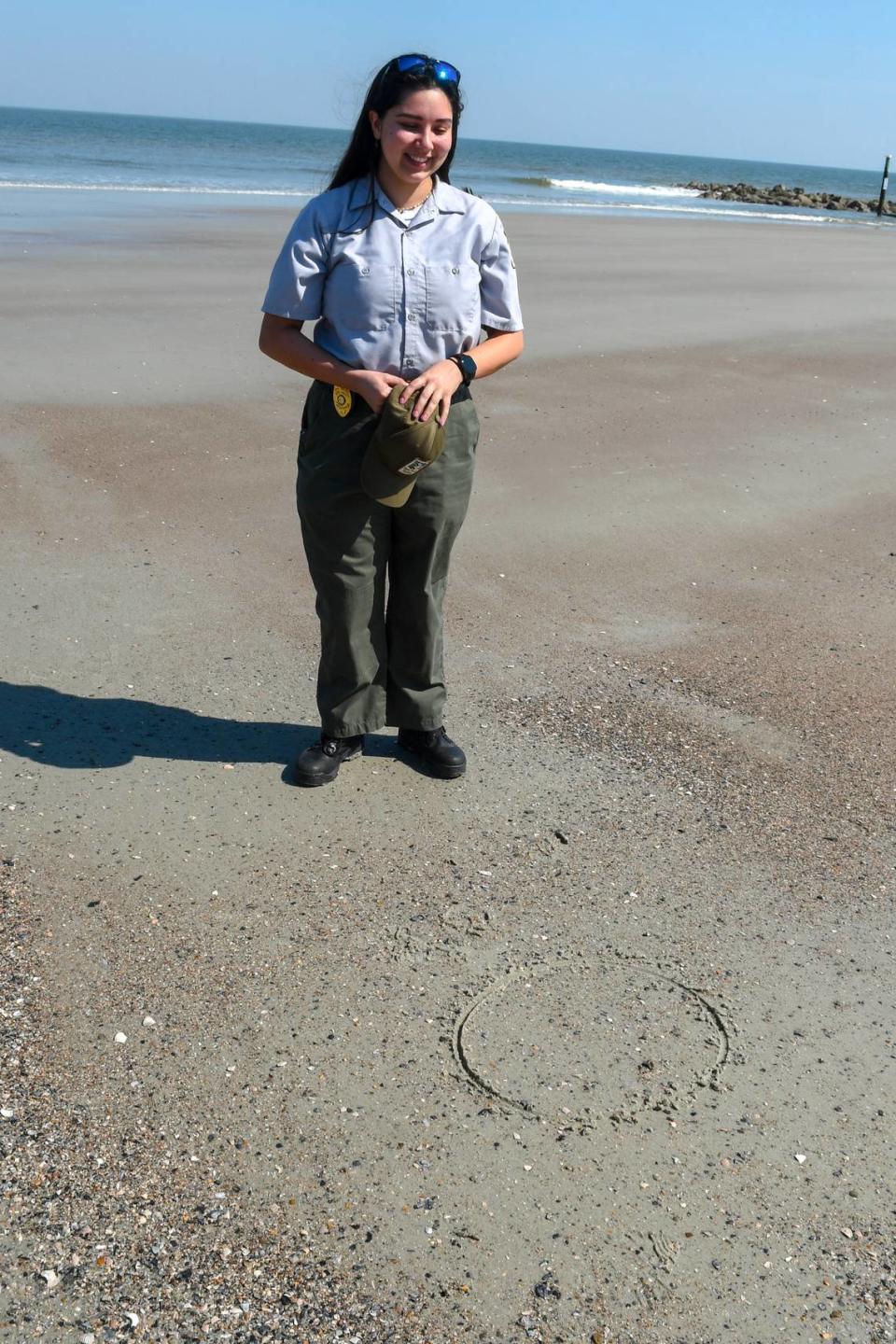Searching for shark teeth in SC? Tips you were told may be wrong. Here’s how to find them
Standing tall with her eyes cast to the sand, Candra Workman can spot a shark tooth smaller than a dime in under a minute.
She draws a circle around it using her index finger. Crouching down, focusing hard, most people would miss it. She draws an even smaller circle to make it easier. Finally scooping up the tiny relic and placing it in a palm, most people couldn’t identify the type of shark that lost the tooth.
Lemon or bull shark, the Hunting Island State Park assistant ranger quickly surmised.

For Workman, it’s no sweat deciphering shark teeth among a bed of cracked seashells and fossilized oyster shell pieces. For some staying at the park’s campgrounds, they’ve perfected the craft and say they’ve found hundreds. But for the majority of novice shark-tooth hunters, it can be like finding a needle in a haystack – and the “secrets” of the search that they’ve been told may be wrong.
No, there’s no special time of year when there are more teeth on the beach, Workman says. The boneyard is the worst area to look. And Hunting Island isn’t the Beaufort County hot-spot. But there is a certain science to the scavenge.
When the currents come down from the north of Harbor Island, they “curl and roll” to create pillars of sediment that lie vertical to the shoreline and are exposed at low tide, Interpretive Ranger Rachel Dunn explained. Because of the wave action, the pillars aren’t equally scattered across the barrier island. It means the boneyard – the island’s south end that’s heavily eroded and has dead trees in the surf – doesn’t have the sediment pillars.
It’s in these pillars where seashells and shark teeth are aplenty. The serious searchers pop open a beach chair, pull out their sifters and piece through the pillars for hours.

Workman, whose office is the island, used to walk the beach in the mornings on her day off just to look for shark teeth. Sunrise walkers tend to be prolific scavengers, so much so that people would stake their territory.
But her highest one-day count of 28 shark teeth was collected right before the sweltering summer sun set. While she hasn’t noticed certain patterns that bring successful hunting days, some swear by the seasons.
“In the summertime, can we go find shark teeth?” Workman asked the proclaimed experts.
“Sorry, it’s not time yet,” they responded.
“In the wintertime?” she wondered.
“It’s not time yet,” they retorted.
Whether once told the secrets and if they are even true, Workman doesn’t need them.
Among vivid seashell fragments, she can spot the fossilized teeth that are gunmetal gray, matte and some with hints of blue. The blue-toned quality is what makes it easier to interpret that it’s a shark tooth and not a fossilized oyster shell.

The really dark shark teeth, Dunn said, are millions of years old and more commonly found. The lighter teeth, beige or pearly in color, fell out more recently. Eventually, once they’ve broken down completely, the sediment, just like the seashells, will become sand particles.
While Workman’s turned up a decent number of shark teeth on Hunting Island, she says it isn’t the premiere spot in the county. That’s Sands beach in Port Royal. In the state? People claim Folly Beach. The country? Many have declared it’s Florida’s Venice Beach.
“Sharks go through so many teeth,” Dunn said. “They are in a constant cycle of shedding and regrowing. So who knows how many shark teeth there are at the bottom of the ocean just waiting to be churned up and sent on the beaches.”
And if luck is a factor, it could churn up a relic from a long-extinct shark that’s every avid hunter’s dream to collect: a megalodon tooth.

